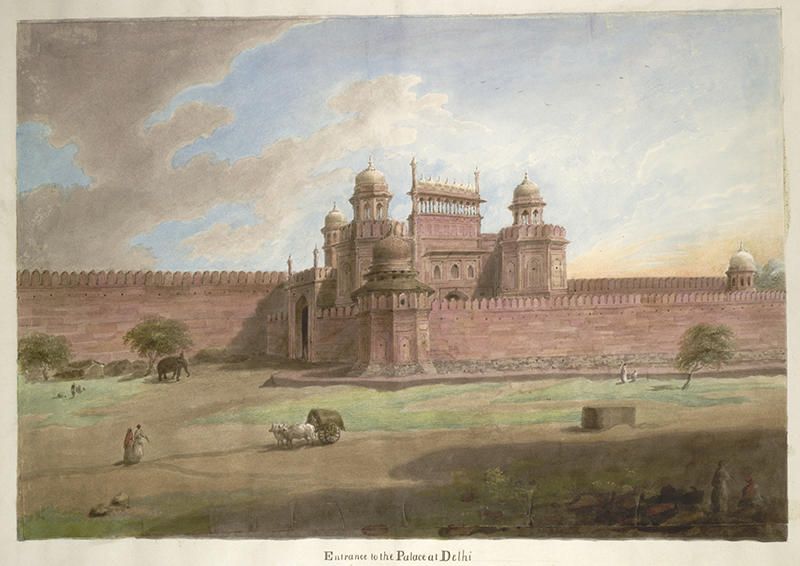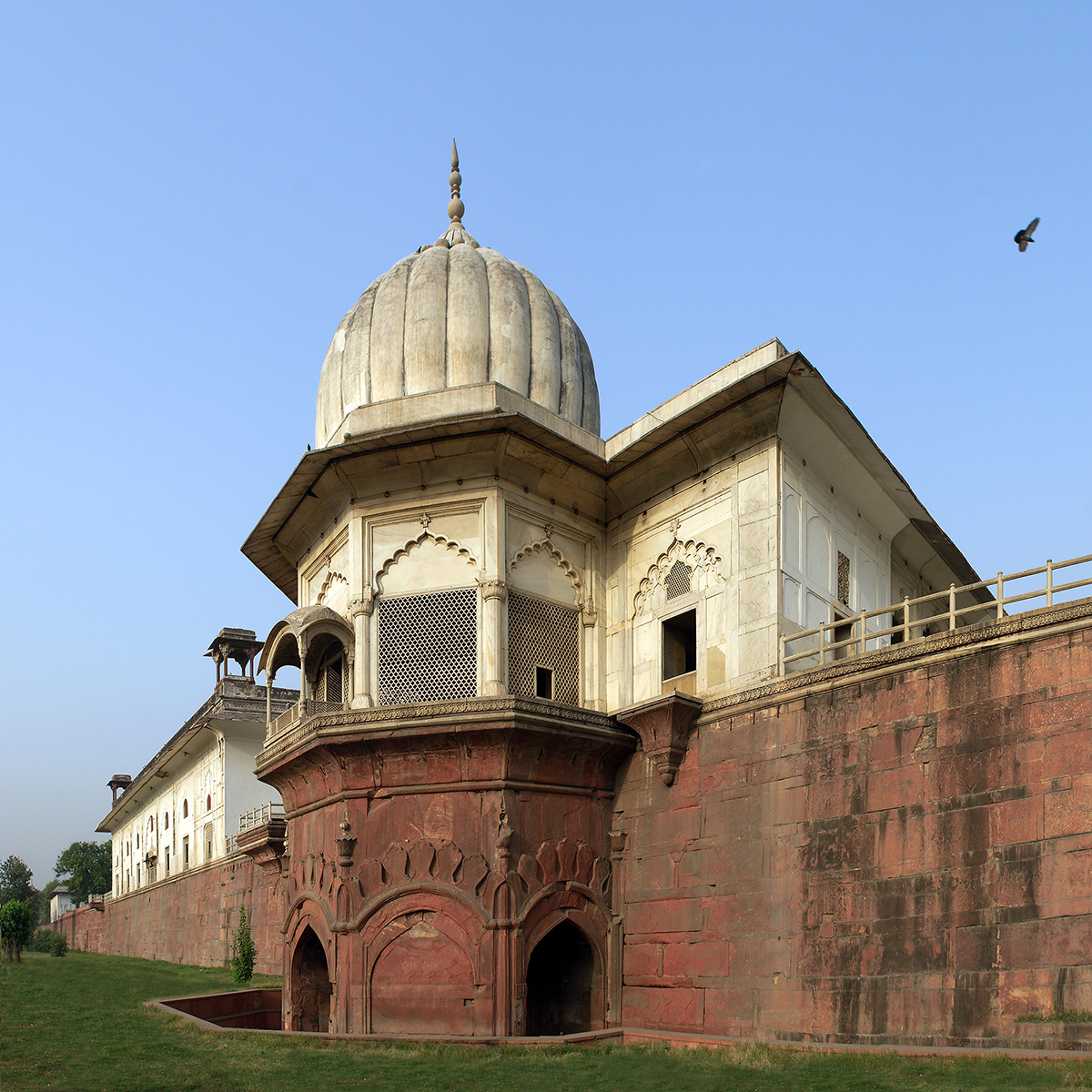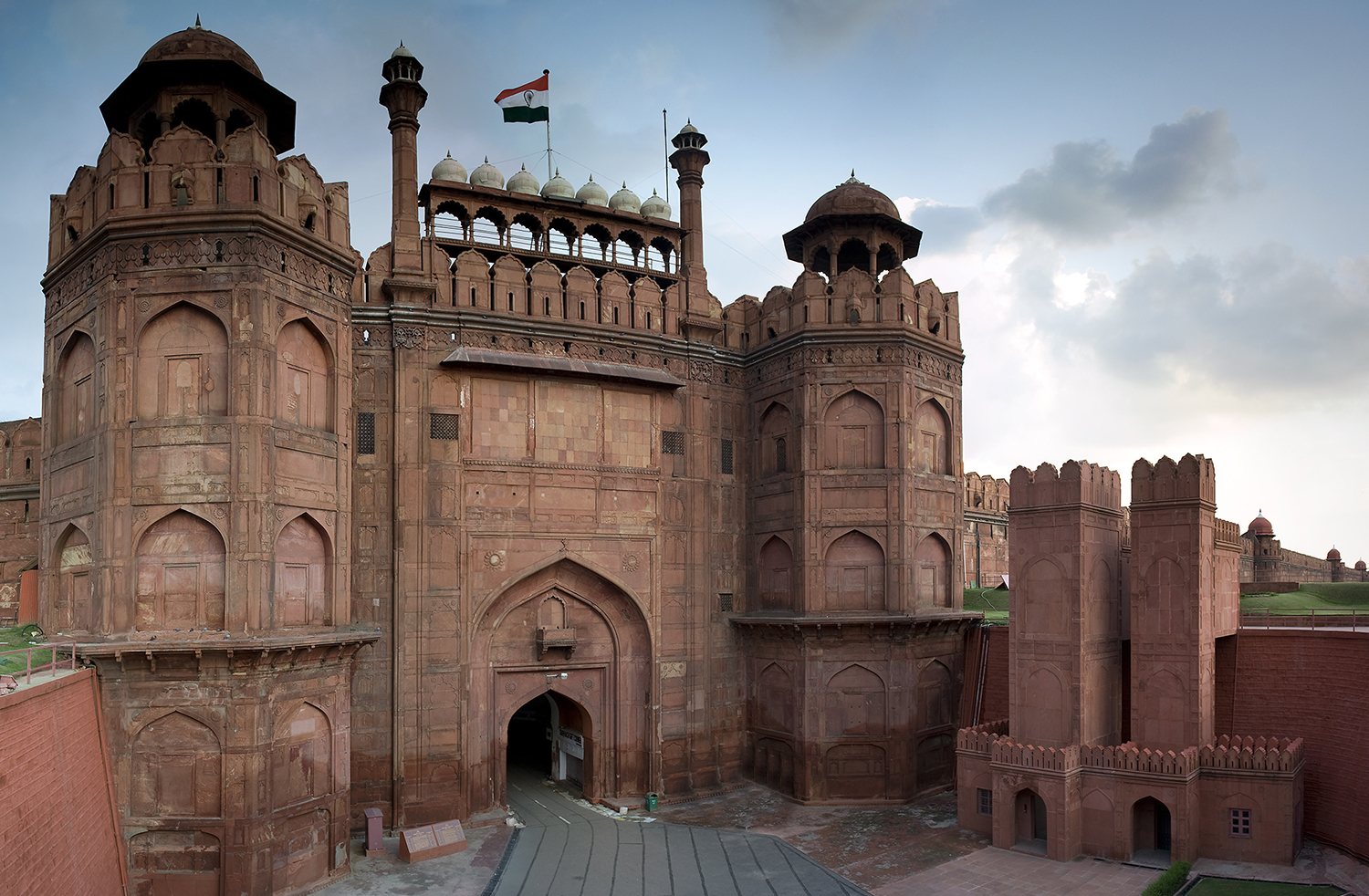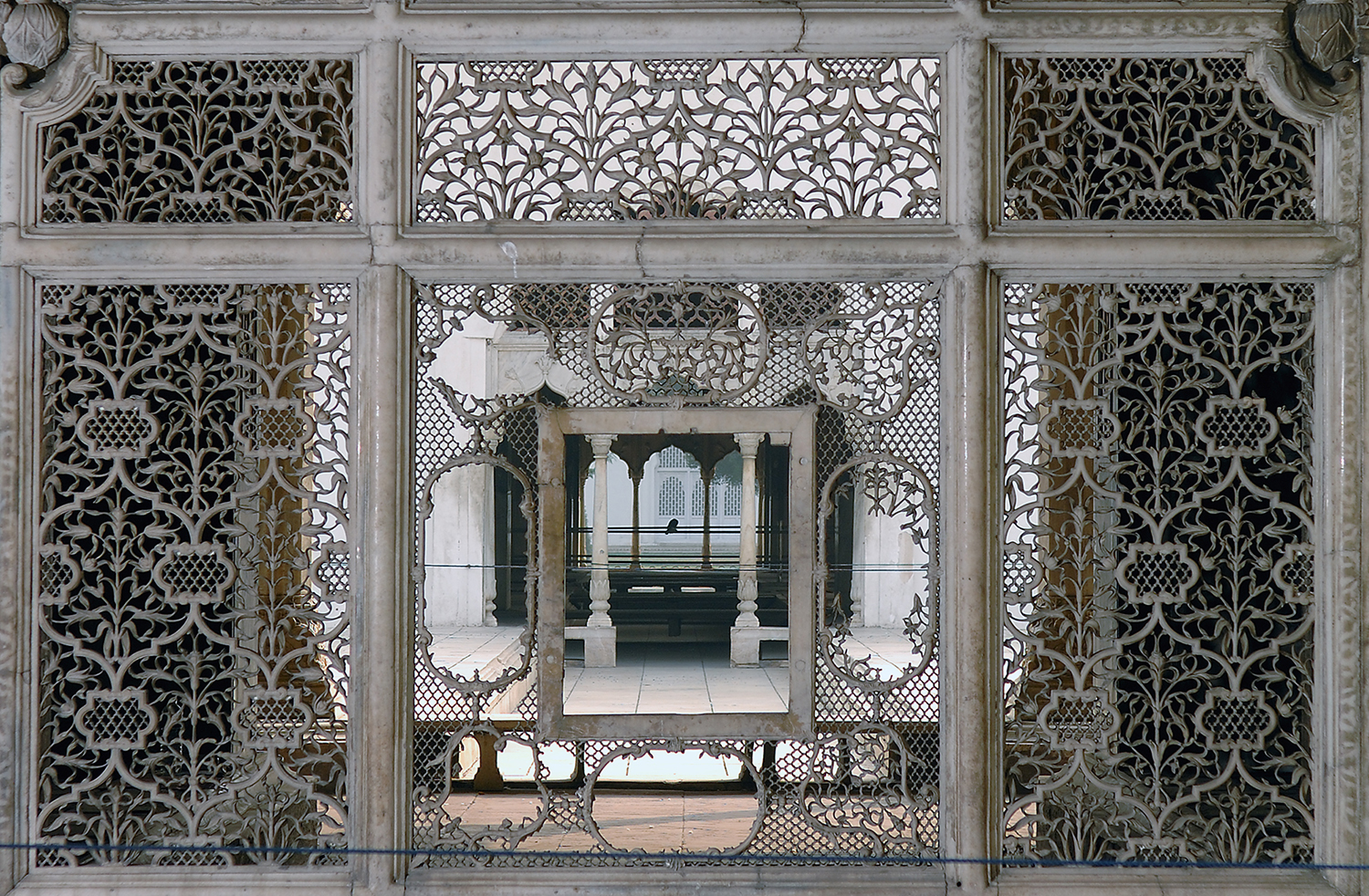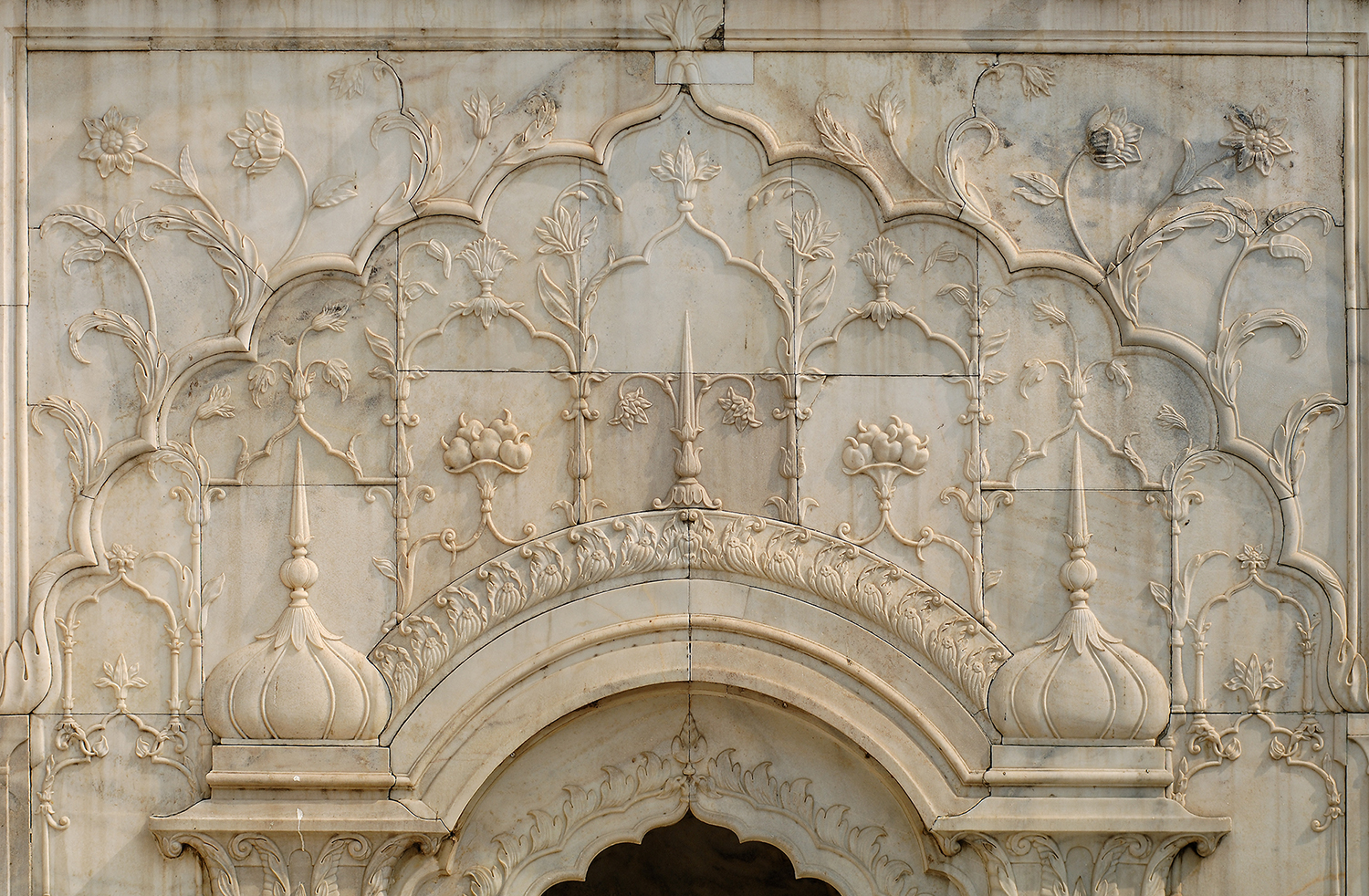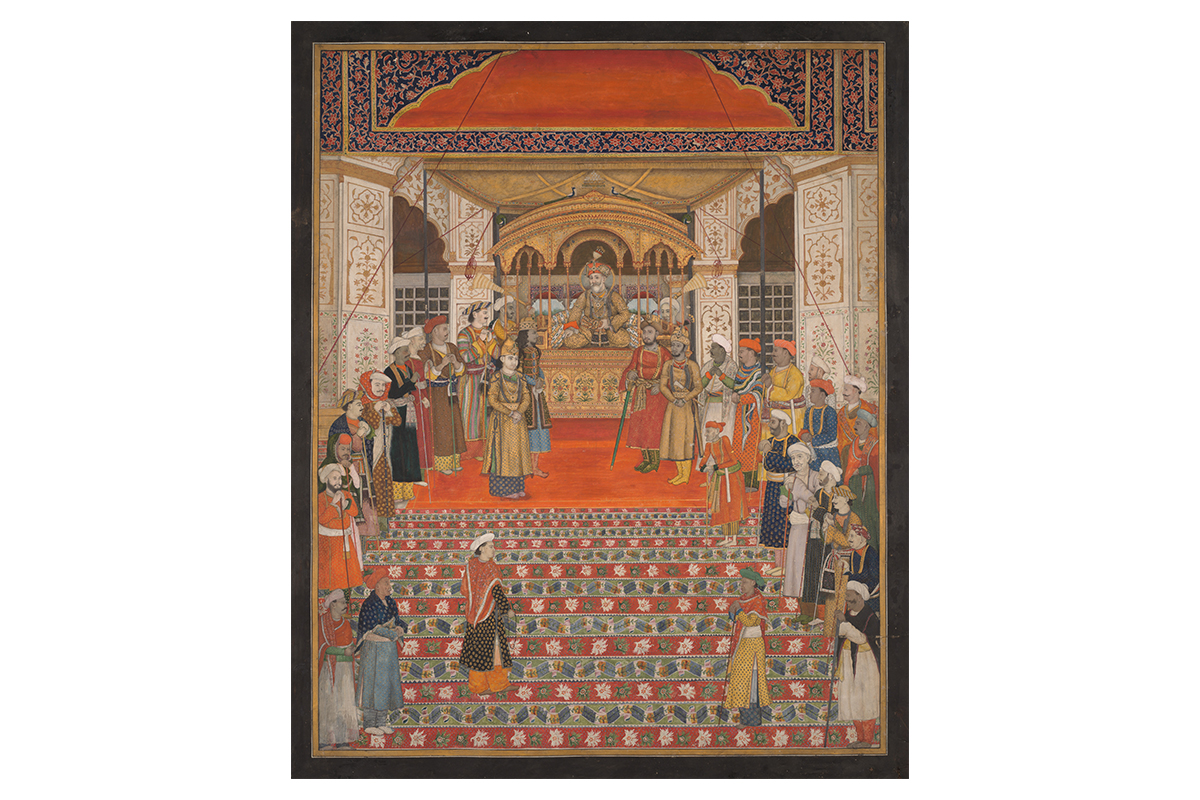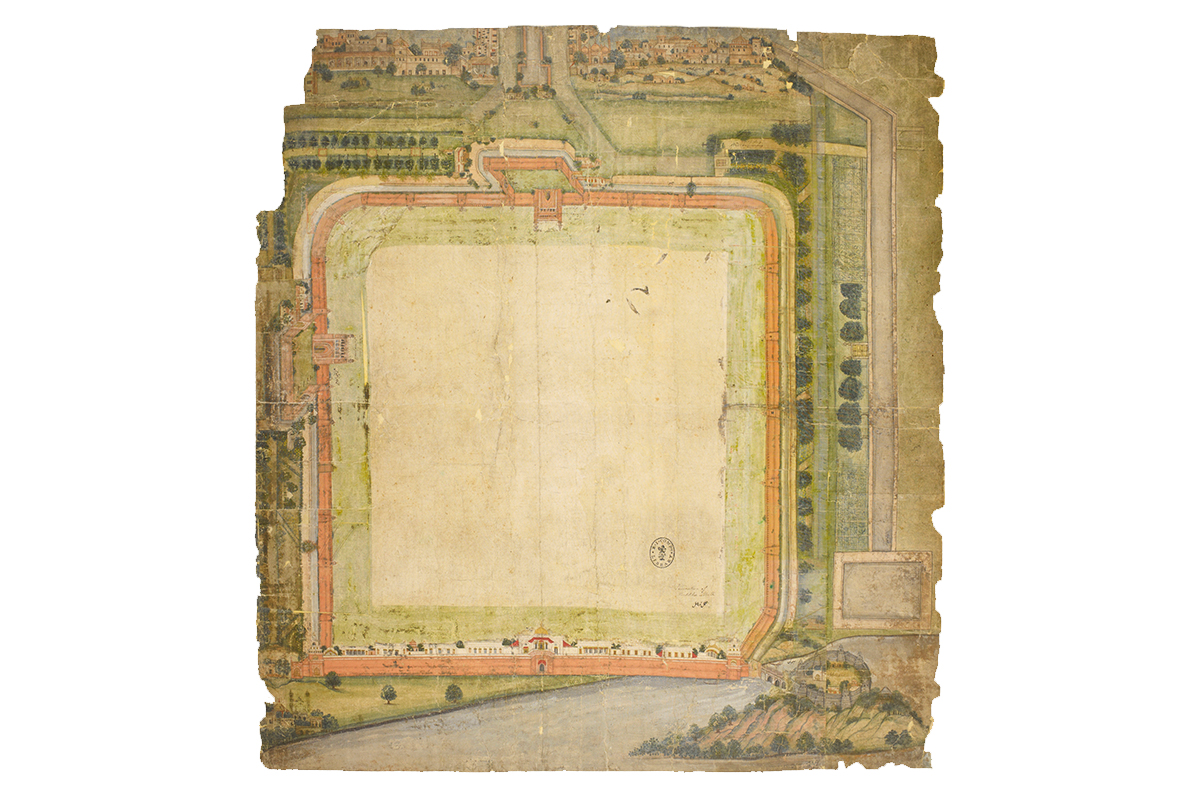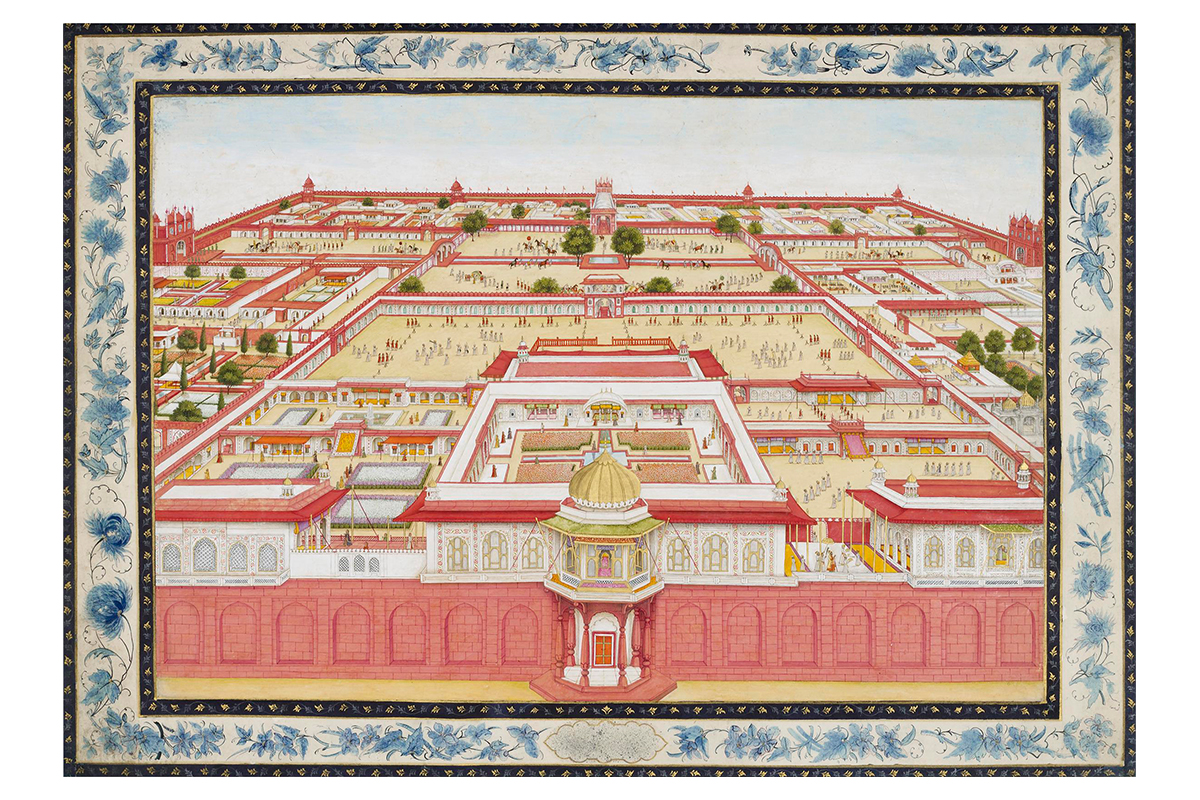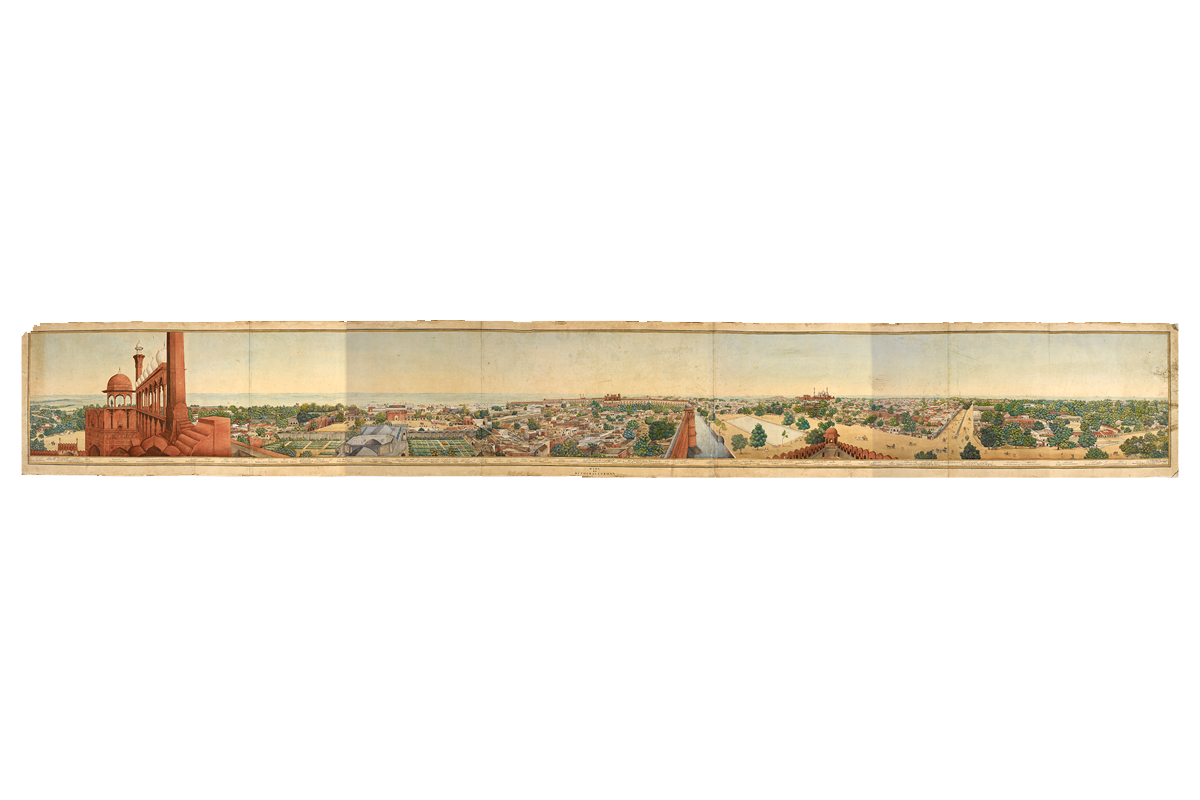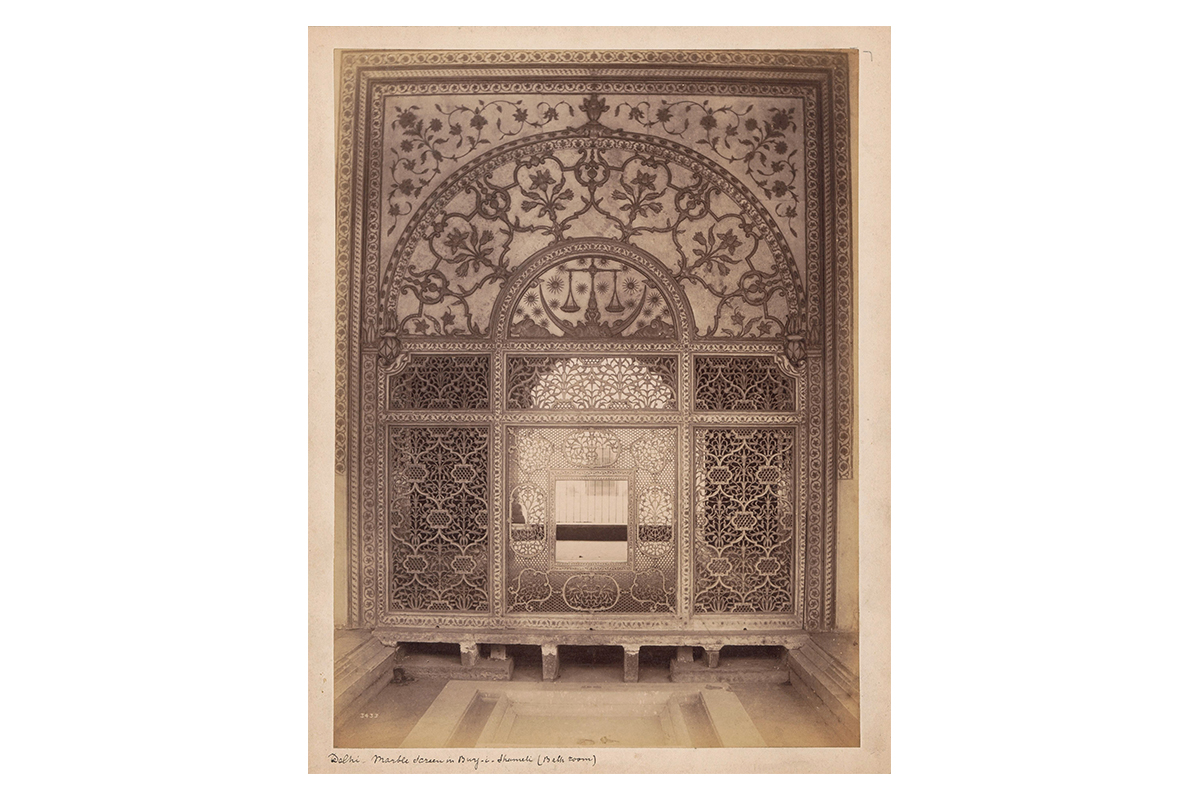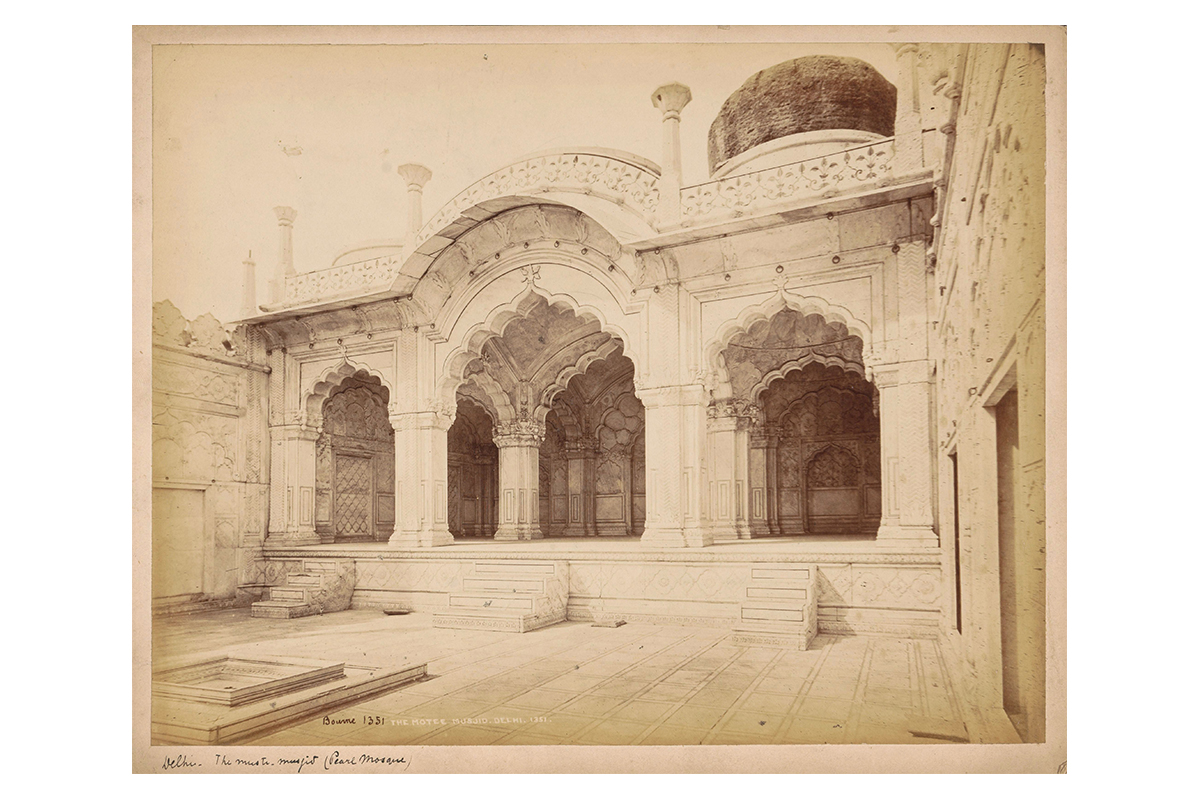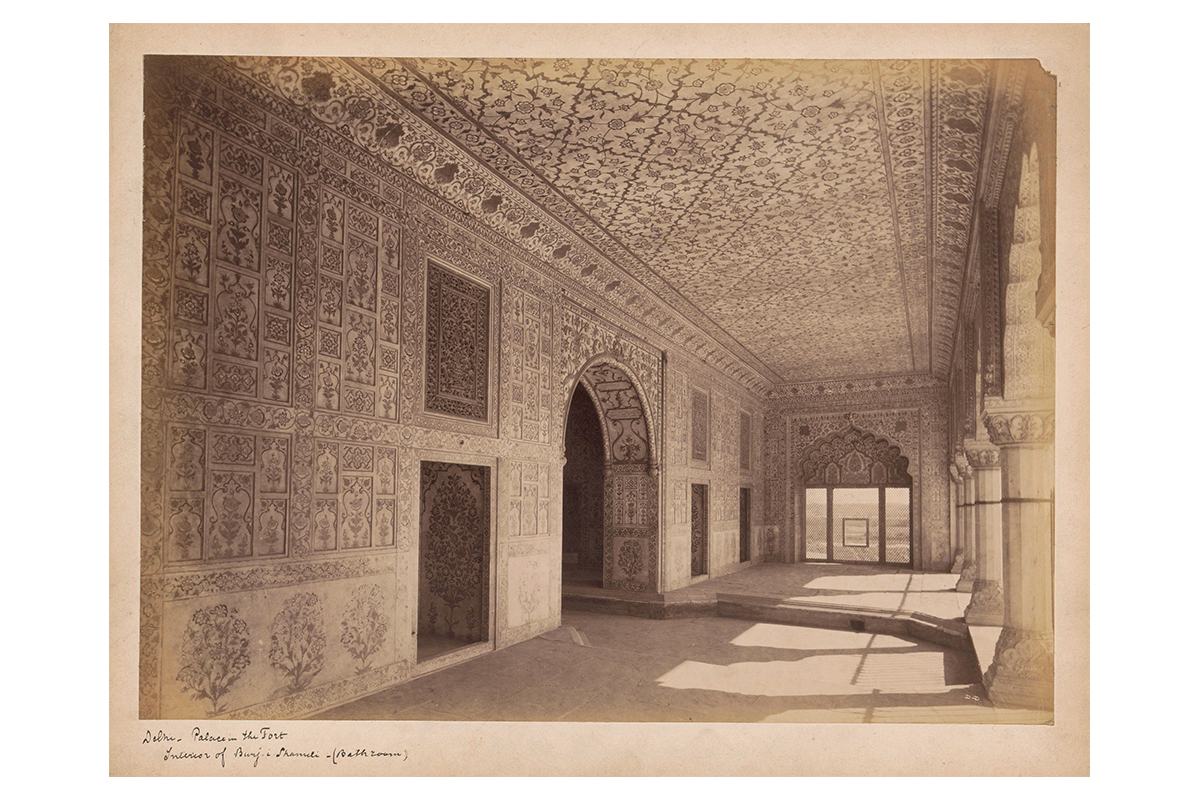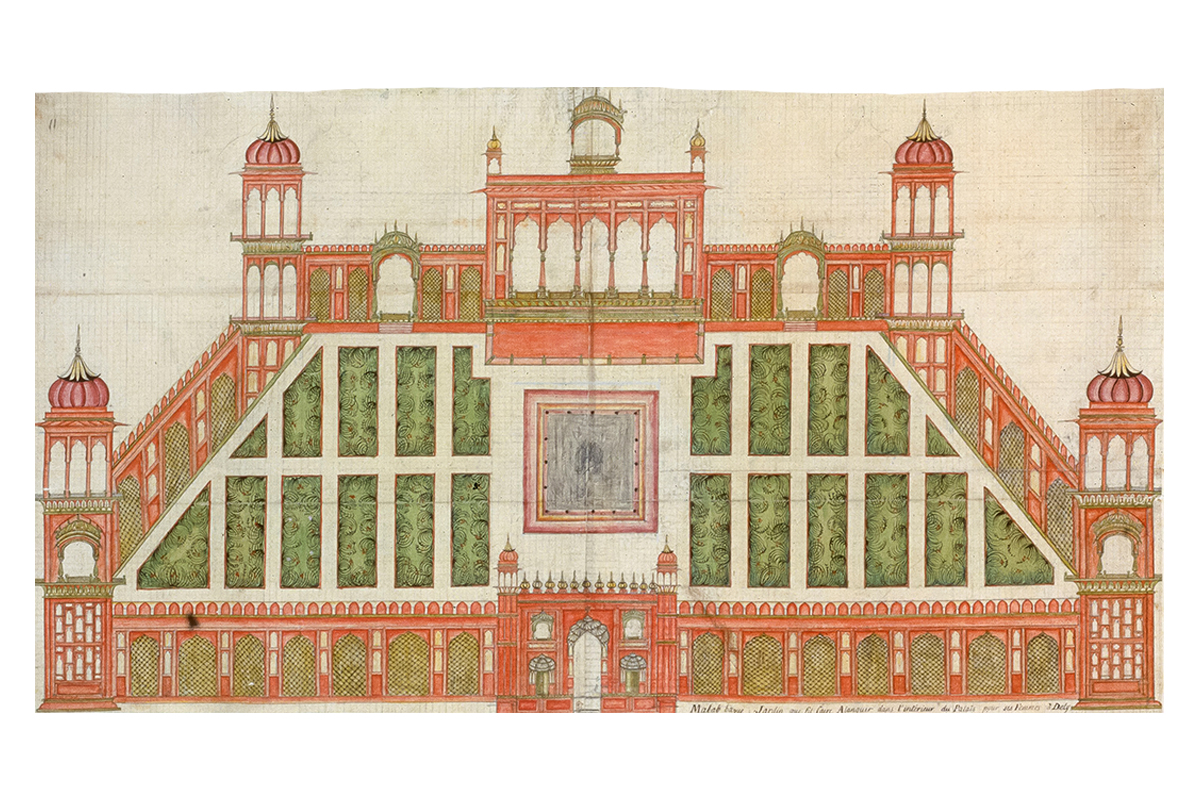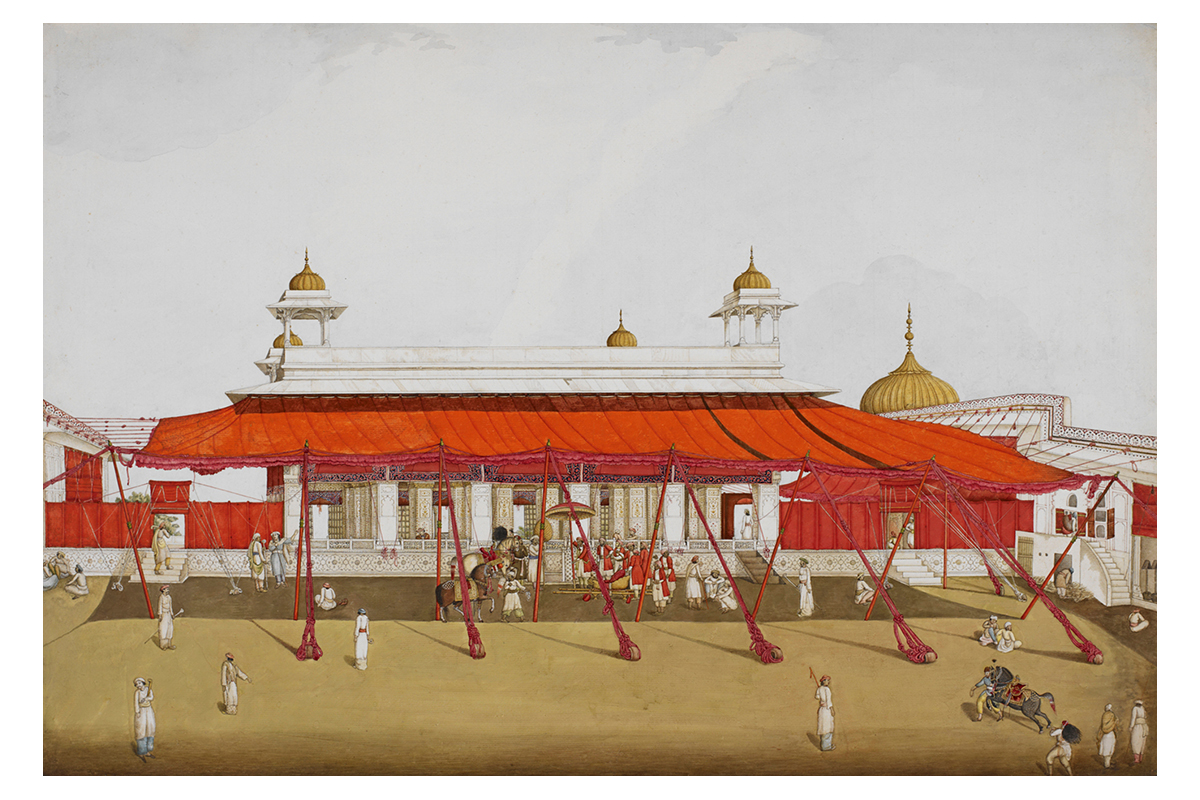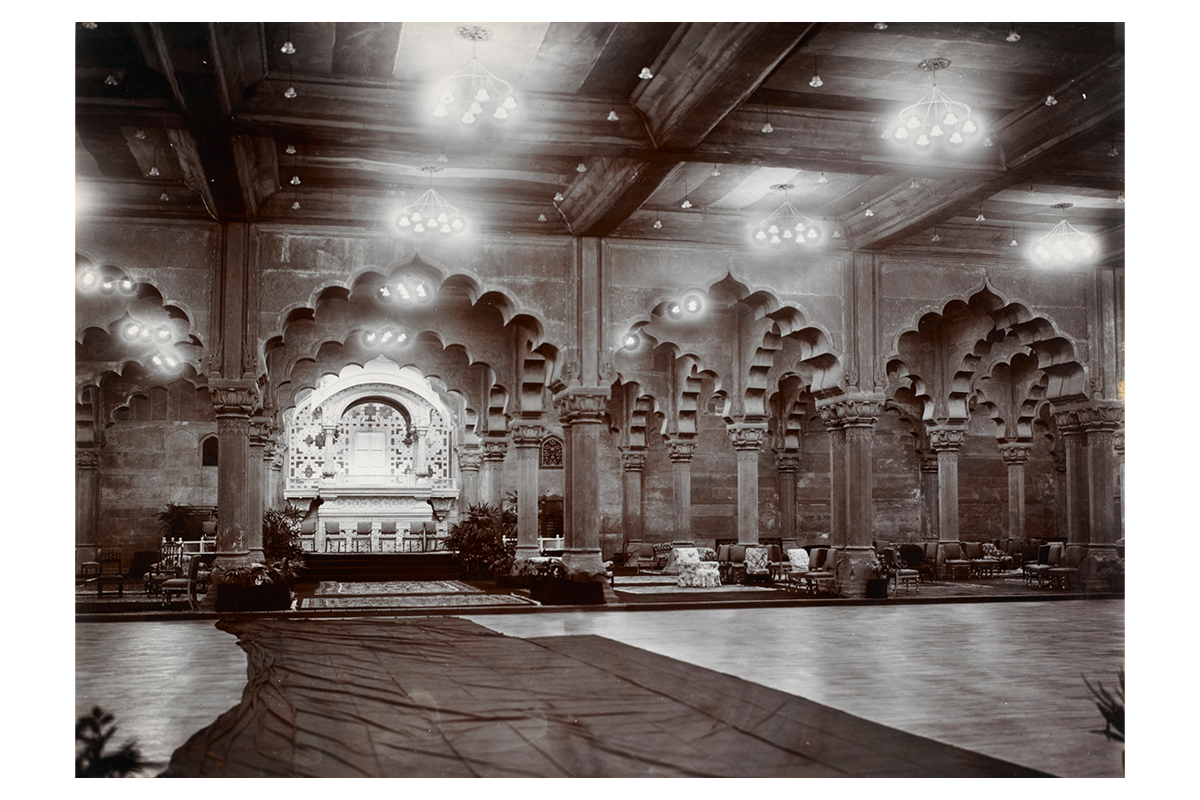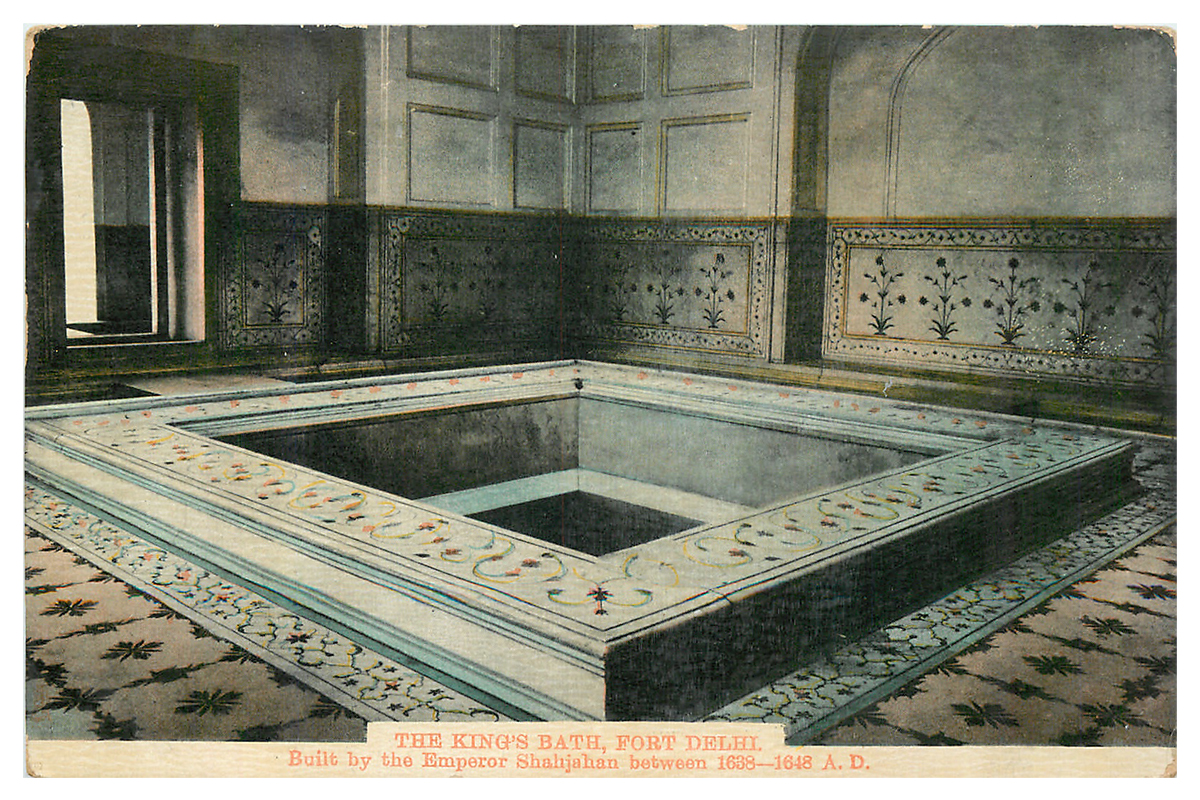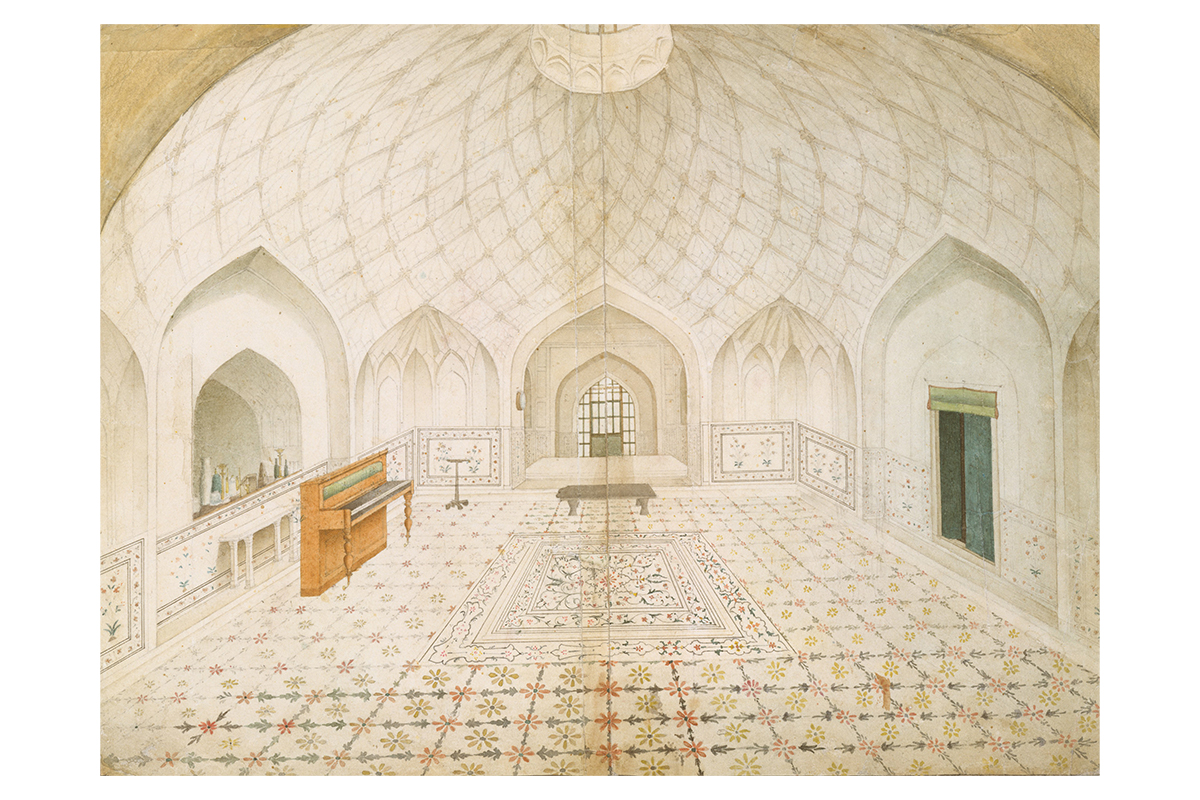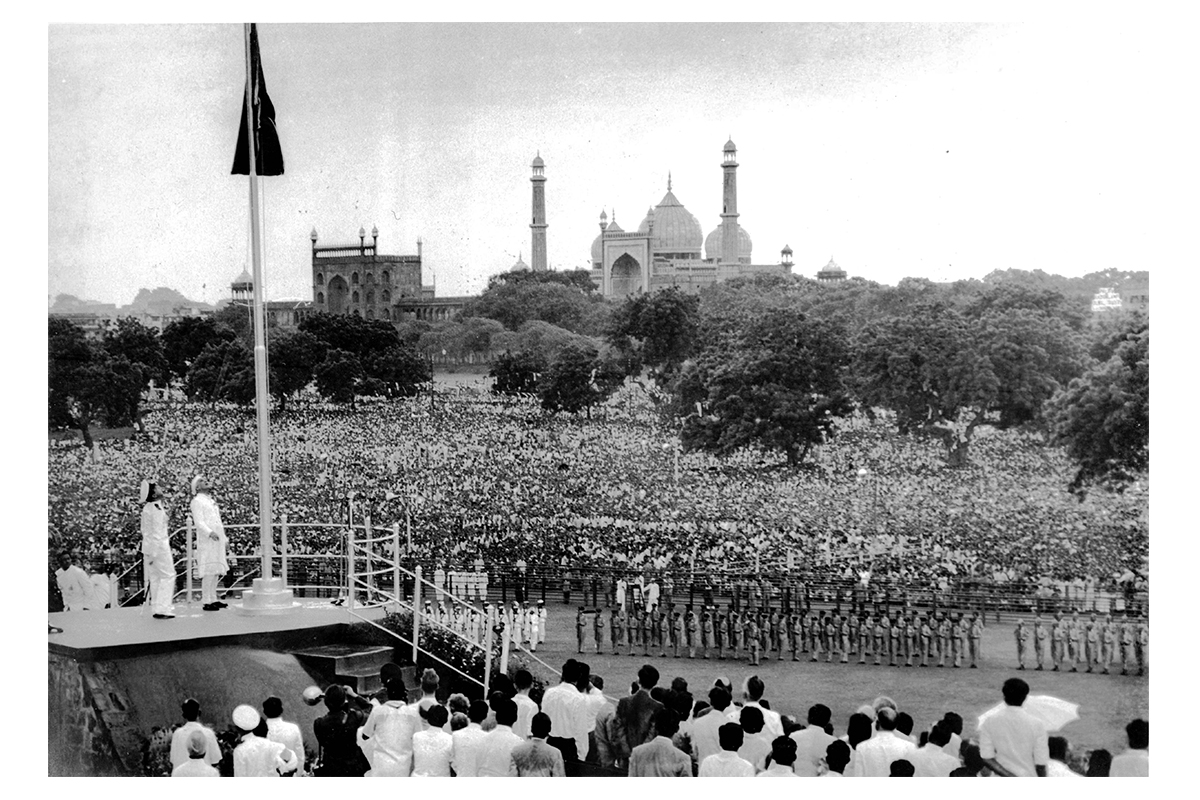ARTICLE
Red Fort, New Delhi
Towards the south of the Shah Burj are a hammam (bath house) and the Diwan-i-Khaas, or ‘Private Audience Hall’, which together formed part of a single unified quadrangle meant entirely for holding privy councils regarding important administrative matters. The Diwan-i-Khaas, originally known as the Shah Mahal (‘Palace of the King’), was embellished with gilt, marble inlaid with precious and semi-precious stones in floral patterns, and a silver ceiling, all of which has since been dismantled and looted. It also housed Shah Jahan’s ornate Peacock Throne, taken by Nader Shah during his siege of Delhi in 1739. Adjacent to the Diwan-i-Khaas were the private quarters of the emperor, called the Khaas Mahal. This comprised the Viz-e-Tasbih Khana (‘Chamber of the Prayer Beads’), the Khwabgah, which served as the sleeping chamber, and the Tosha Khana or baithak (‘Sitting Room’). The quarters feature arched windows and are noted for their carved and pietra-dura inlaid marble interiors, with multi-coloured floral and foliate patterns. Of note is a jaali or latticework screen decorated with floral motifs, above which is a semi-circular panel featuring a crescent moon that frames the scales of justice on it.
In 1659, following the succession of Aurangzeb to the throne, a mosque called the Moti Masjid was added to the emperor’s private quarters. Only he and the women of the zenana could offer their prayers there, and a special passage was made for them to be able to enter the mosque without being seen. The mosque sits on a plinth and is made entirely out of white marble, with black marble used to mark the areas meant for the placement of prayer mats. Engrailed arches allow entry into the mosque from its courtyard. Three large domes sit atop each of these arches, with slender minarets at regular intervals.
The chief zenana quarters lie to the south of the emperor’s quarters, along the axis of the Nahr-i-Bihisht, comprising the Rang Mahal and the Mumtaz Mahal. The Rang Mahal lies behind the Diwan-i-Aam across what was originally a luxurious garden. During its early years, the Rang Mahal was one of the grandest structures of the complex, with its walls and columns made from marble, and the rest of the building plastered white. It is well known for housing a large basin carved out of a single block of marble, and another marble basin in a floral design. Along the eastern front of the fortress, though distant from the rest of the buildings lies the Mumtaz Mahal. This was the residence of the chief women of the harem. Its lower sections are marble and there are traces of gilding on the walls.
Two structures commissioned by the last Mughal emperor, Bahadur Shah Zafar (r. 1837–57), lie south of the Shah Burj. The first is a marble baradari or twelve-arched pavilion, called the Hira Mahal, situated along the axis of the eastern quarters. To its west is the Zafar Mahal — a red sandstone pavilion that sits in the centre of a water tank. These quarters, built primarily for leisure, mark the decline of the Mughal empire as its powers became nominal and the emperors’ focus shifted away from administration, in the face of the East India Company’s rule across the subcontinent.
The decline of the Mughal empire following the death of Aurangzeb adversely affected the fortress. Over the following two centuries, it variously came under the control of a number of enemies of the Mughals, including the Marathas and the Sikhs. Following the Revolt of 1857, the British Crown took over administrative control of the subcontinent and the Red Fort came under their power. Bahadur Shah Zafar, who occupied the fortress at the time, was exiled to Burma (present-day Myanmar) following a trial held inside the Diwan-i-Khaas. Under colonial rule, the interiors of the Red Fort were heavily altered and repurposed for British use, symbolically destroying what had been the epicentre of the revolt. The British built barracks of red and white sandstone within the complex. Lahore Gate was renamed Victoria Gate and its quarters were taken up by the British army. The windows of the Naqqar Khana, from which musicians had heralded important arrivals, were covered, while the fortress’s kitchen and the stables to its north were all removed. The hammam was converted into a living room and furnished accordingly while the Zafar Mahal tank was used as a swimming pool by the residing British soldiers. The original gilded domes of the Moti Masjid, which had been destroyed during the Revolt of 1857, were replaced by marble ones — however, as the British builders miscalculated their size, the mosque has been left with disproportionately large domes ever since.
Colonial appropriation of the fortress continued well into the twentieth century. The fort underwent reconstruction and renovation prior to the 1911 Delhi Durbar, an event at which the British announced their decision to move their capital from Calcutta (now Kolkata) to Delhi. The locality of Coronation Park, close to the Red Fort, was originally selected for the construction of the new capital’s legislative buildings given the area’s historical significance. However, it was eventually abandoned in favour of the Raisina Hills area after the Red Fort area proved vulnerable to flooding. In 1945 the Red Fort also served as the site of the British government’s public trials of three captured members of the Indian National Army (INA), a militant group agitating for national independence. The INA had hoped to reclaim the Red Fort from the British as a symbol of power.
Following India’s independence in 1947, the Indian Army took over the Red Fort complex. The nation’s first prime minister, Jawaharlal Nehru, raised the national flag at Lahore Gate, restoring the Red Fort as a symbol of the country’s prolonged and victorious freedom struggle. During the Partition, expansive monuments such as the Red Fort and Purana Qila were turned into refugee camps to provide asylum to Muslims who had decided to remain in India and were fleeing from the violence of communal riots. The site has remained symbolically important in Indian politics and culture, and the prime minister has continued to address the nation from here on the Indian Independence Day every year. This significance also made it the site of a violent terrorist attack in 2000.
In 2003, the army handed the monument over to the Archaeological Survey of India (ASI) for restoration. In the ensuing years, a large number of army-built structures such as cottages, toilets and garages, deemed obtrusive, were demolished by the ASI. There was a decision to maintain the British structures as the 90-year colonial occupation of the fort was viewed as being important to the complex’s history. In 2007, the Red Fort was declared a UNESCO World Heritage Site. In 2018, the government handed over the fort to an industrial conglomerate, the Dalmia Bharat Group, for a period of five years under the Ministry of Culture’s ‘Adopt a Heritage’ scheme. The move was widely criticised by the public as it meant the involvement of private, corporate entities in the maintenance of national, public monuments.
The Red Fort and the buildings within its complex appear frequently in Mughal miniature paintings made from the second half of the seventeenth century. One such example is a painting dated to the reign of Akbar II, depicting a lavish durbar inside the Diwan-i-Khaas, with the emperor at the centre, seated atop the Peacock Throne. The Red Fort was also a popular subject, alongside other Mughal buildings, in British-commissioned Company School paintings of the early nineteenth century, a number of which also depict the layout of the complex. Following the advent of photography in the mid-nineteenth century, the Red Fort became a popular subject for the medium, with early photographers such as Samuel Bourne and Felice Beato producing panoramic views, as well as images of its interiors, especially the Diwan-i-Aam and the Diwan-i-Khaas. Such images would often feature in the popularly circulated postcards produced by photography studios of the period. Since 1947, the Red Fort has featured in a number of postage stamps, and is also pictured on the reverse side of the 500-rupee currency banknotes issued since 2016. Among modern and contemporary paintings, the fort appears in a striking red hue as the backdrop for Portrait of Shri Shankerbhai V. Patel Near Red Fort (c. 1971) by Bhupen Khakhar.
At the time of writing, the Red Fort houses a number of museums within its premises, such as the Indian War Memorial Museum, dedicated to the Indian soldiers who fought as part of the British army in World War I. Situated in the Naqqar Khana, it houses Mughal-era weapons and armours; items from World War I, such as uniforms of Turkish and New Zealander soldiers; contemporary weapons; as well as the traditional outfit of the Maharaja of Jodhpur. The Swatantrata Sangram Sangrahalaya (‘Museum of the Freedom Struggle’) was set up in one of the double-storeyed British barracks in 1995. In 2019, the government announced a series of museum projects to be organised within the fort complex. The projects, together called Kranti Mandir, are housed in the former British barracks and feature archival documents, artwork and digitised displays dedicated to the anti-colonial movement from 1857 onwards. One such museum is the Drishyakala Art Museum housed in Barrack No. 4 of the fort complex, which contains artworks by Abanindranath Tagore, Amrita Sher-Gil and Raja Ravi Varma, among others.
An iconic Indian monument from the Mughal era alongside the Taj Mahal in Agra and Humayun’s Tomb in New Delhi, the Red Fort is a highly popular tourist spot that continues to attract visitors to the city and locals in large numbers.
Bibliography
Asher, Catherine B. “Shah Jahan and the Crystallization of Mughal Style.” In The New Cambridge History of India I: 4 Architecture of Mughal India. Cambridge: Cambridge University Press, 1992.
Koch, Ebba. “Shah Jahan.” In Mughal Architecture: An Outline of Its History and Development (1526–1858), 97–123. Munich: Prestel-Verlag, 1991.
Koch, Ebba. “Shah Jahan and Orpheus: The Pietre Dure Decoration and the Programme of the Throne in the Hall of Public Audiences at the Red Fort.” In Mughal Art and Imperial Ideology: Collected Essays. New Delhi: Oxford University Press, 2001.
Nath, R. “Lal Qila.” Grove Art Online, 2003. https://doi.org/10.1093/oao/9781884446054.013.90000369808.
Nettikkara, Samhita. “Indians Upset Over Red Fort Monument ‘Adoption’.” BBC, April 30, 2018. Accessed September 13, 2022. https://www.bbc.com/news/world-asia-india-43949370.
Rezavi, Syed Ali Nadeem. “The Mighty Defensive Fort: Red Fort at Delhi under Shah Jahan—Its Plan and Structures as Described by Muhammad Waris.” Proceedings of the Indian History Congress 71 (2010): 1108–21. https://www.jstor.org/stable/44147579.
Safvi, Rana. Shahjahanabad: The Living City of Old Delhi. Noida: HarperCollins Publishers India, 2019.
Sharma, Sanjay. “Red Fort Is Mine, Claims Widow of Bahadur Shah Zafar-II’s Grandson; HC Junks Plea.” India Today, December 20, 2021. Accessed June 29, 2022. https://www.indiatoday .in/india/story/delhi-hc-red-fort-legal-heir-petition-widow-grandson-mughal-king-bahadur-shah-zafar-ii-1890093-2021-12-20.
Sultan, Parvez. “Historical Trove: Red Fort to Have Cluster of Museums.” The New Indian Express, April 7, 2019. Accessed May 19, 2022. https://www.newindianexpress.com/thesunday
standard/2019/apr/07/historical-trove-red-fort-to-have-cluster-of-museums-1961241.html.




